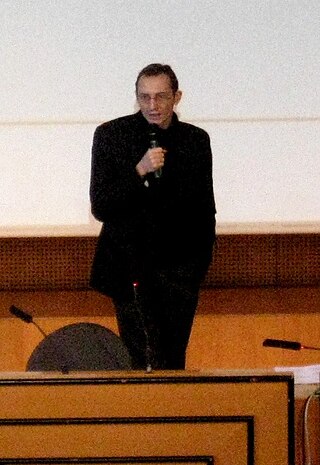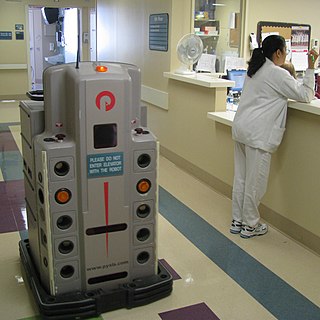
Labour economics, or labor economics, seeks to understand the functioning and dynamics of the markets for wage labour. Labour is a commodity that is supplied by labourers, usually in exchange for a wage paid by demanding firms. Because these labourers exist as parts of a social, institutional, or political system, labour economics must also account for social, cultural and political variables.
A minimum wage is the lowest remuneration that employers can legally pay their employees—the price floor below which employees may not sell their labor. Most countries had introduced minimum wage legislation by the end of the 20th century. Because minimum wages increase the cost of labor, companies often try to avoid minimum wage laws by using gig workers, by moving labor to locations with lower or nonexistent minimum wages, or by automating job functions. Minimum wage policies can vary significantly between countries or even within a country, with different regions, sectors, or age groups having their own minimum wage rates. These variations are often influenced by factors such as the cost of living, regional economic conditions, and industry-specific factors.

Unemployment, according to the OECD, is people above a specified age not being in paid employment or self-employment but currently available for work during the reference period.
Full employment is a situation in which there is no cyclical or deficient-demand unemployment. Full employment does not entail the disappearance of all unemployment, as other kinds of unemployment, namely structural and frictional, may remain. For instance, workers who are "between jobs" for short periods of time as they search for better employment are not counted against full employment, as such unemployment is frictional rather than cyclical. An economy with full employment might also have unemployment or underemployment where part-time workers cannot find jobs appropriate to their skill level, as such unemployment is considered structural rather than cyclical. Full employment marks the point past which expansionary fiscal and/or monetary policy cannot reduce unemployment any further without causing inflation.

Underemployment is the underuse of a worker because their job does not use their skills, offers them too few hours, or leaves the worker idle. It is contrasted with unemployment, where a person lacks a job at all despite wanting one.

In economics, a discouraged worker is a person of legal employment age who is not actively seeking employment or who has not found employment after long-term unemployment, but who would prefer to be working. This is usually because an individual has given up looking, hence the term "discouraged".
In economics, the lump of labour fallacy is the misconception that there is a finite amount of work—a lump of labour—to be done within an economy which can be distributed to create more or fewer jobs. It was considered a fallacy in 1891 by economist David Frederick Schloss, who held that the amount of work is not fixed.
Reserve army of labour is a concept in Karl Marx's critique of political economy. It refers to the unemployed and underemployed in capitalist society. It is synonymous with "industrial reserve army" or "relative surplus population", except that the unemployed can be defined as those actually looking for work and that the relative surplus population also includes people unable to work. The use of the word "army" refers to the workers being conscripted and regimented in the workplace in a hierarchy under the command or authority of the owners of capital.
Active labour market policies (ALMPs) are government programmes that intervene in the labour market to help the unemployed find work, but also for the underemployed and employees looking for better jobs. In contrast, passive labour market policies involve expenditures on unemployment benefits and early retirement. Historically, labour market policies have developed in response to both market failures and socially/politically unacceptable outcomes within the labor market. Labour market issues include, for instance, the imbalance between labour supply and demand, inadequate income support, shortages of skilled workers, or discrimination against disadvantaged workers.
Employment protection legislation (EPL) includes all types of employment protection measures, whether grounded primarily in legislation, court rulings, collectively bargained conditions of employment, or customary practice. The term is common among circles of economists. Employment protection refers both to regulations concerning hiring and firing.

The insider-outsider theory is a theory of labor economics that explains how firm behavior, national welfare, and wage negotiations are affected by a group in a more privileged position. The theory was developed by Assar Lindbeck and Dennis Snower in a series of publications beginning in 1984.

Étienne Wasmer is a French professor and economist currently holding a Professorship at New York University in Abu Dhabi. Wasmer mainly focuses on the fields of labor economics, job search theory, discrimination and human capital. He teaches microeconomics and labor economics.
Involuntary unemployment occurs when a person is unemployed despite being willing to work at the prevailing wage. It is distinguished from voluntary unemployment, where a person chooses not to work because their reservation wage is higher than the prevailing wage. In an economy with involuntary unemployment, there is a surplus of labor at the current real wage. This occurs when there is some force that prevents the real wage rate from decreasing to the real wage rate that would equilibrate supply and demand. Structural unemployment is also involuntary.
Non-accelerating inflation rate of unemployment (NAIRU) is a theoretical level of unemployment below which inflation would be expected to rise. It was first introduced as NIRU by Franco Modigliani and Lucas Papademos in 1975, as an improvement over the "natural rate of unemployment" concept, which was proposed earlier by Milton Friedman.

The added worker effect refers to an increase in the labor supply of married women when their husbands become unemployed. Underlying the theory is the assumption that married women are secondary workers with a less permanent attachment to the labor market than their partners. As statistics show, married women do not always behave as secondary workers; therefore, the effect is not a universal phenomenon.

Technological unemployment is the loss of jobs caused by technological change. It is a key type of structural unemployment. Technological change typically includes the introduction of labour-saving "mechanical-muscle" machines or more efficient "mechanical-mind" processes (automation), and humans' role in these processes are minimized. Just as horses were gradually made obsolete as transport by the automobile and as labourer by the tractor, humans' jobs have also been affected throughout modern history. Historical examples include artisan weavers reduced to poverty after the introduction of mechanized looms. During World War II, Alan Turing's bombe machine compressed and decoded thousands of man-years worth of encrypted data in a matter of hours. A contemporary example of technological unemployment is the displacement of retail cashiers by self-service tills and cashierless stores.
Alan Manning is a British economist and professor of economics at the London School of Economics.

Youth unemployment is a special case of unemployment; youth, here, meaning those between the ages of 15 and 24.

Pierre Cahuc is a French economist who currently works as Professor of Economics at Sciences Po. He is Program Director for the IZA Institute of Labor Economics's programme "Labour Markets" and research fellow at CEPR. His research focuses mainly on labour economics and its relationship with macroeconomics. In 2001, he was awarded the Prize of the Best Young Economist of France for his contributions to economic research. He belongs to the most highly cited economists in France and Europe's leading labour economists.
Francis Kramarz is a French economist who works as Professor at the École Nationale de la Statistique et de l'Administration Économique (ENSAE), where he has been directing the Center for Research in Economics and Statistics (CREST). He is one of the leading labour economists in France.










